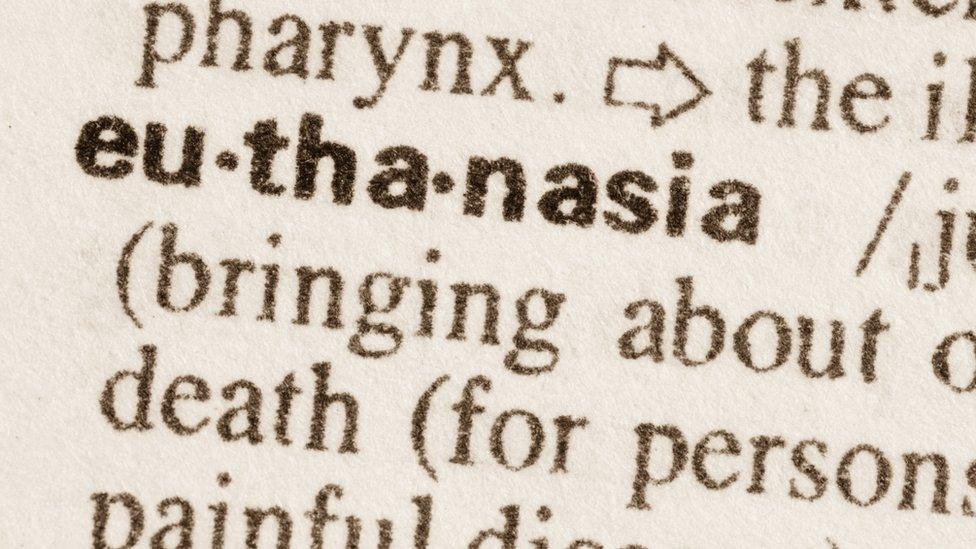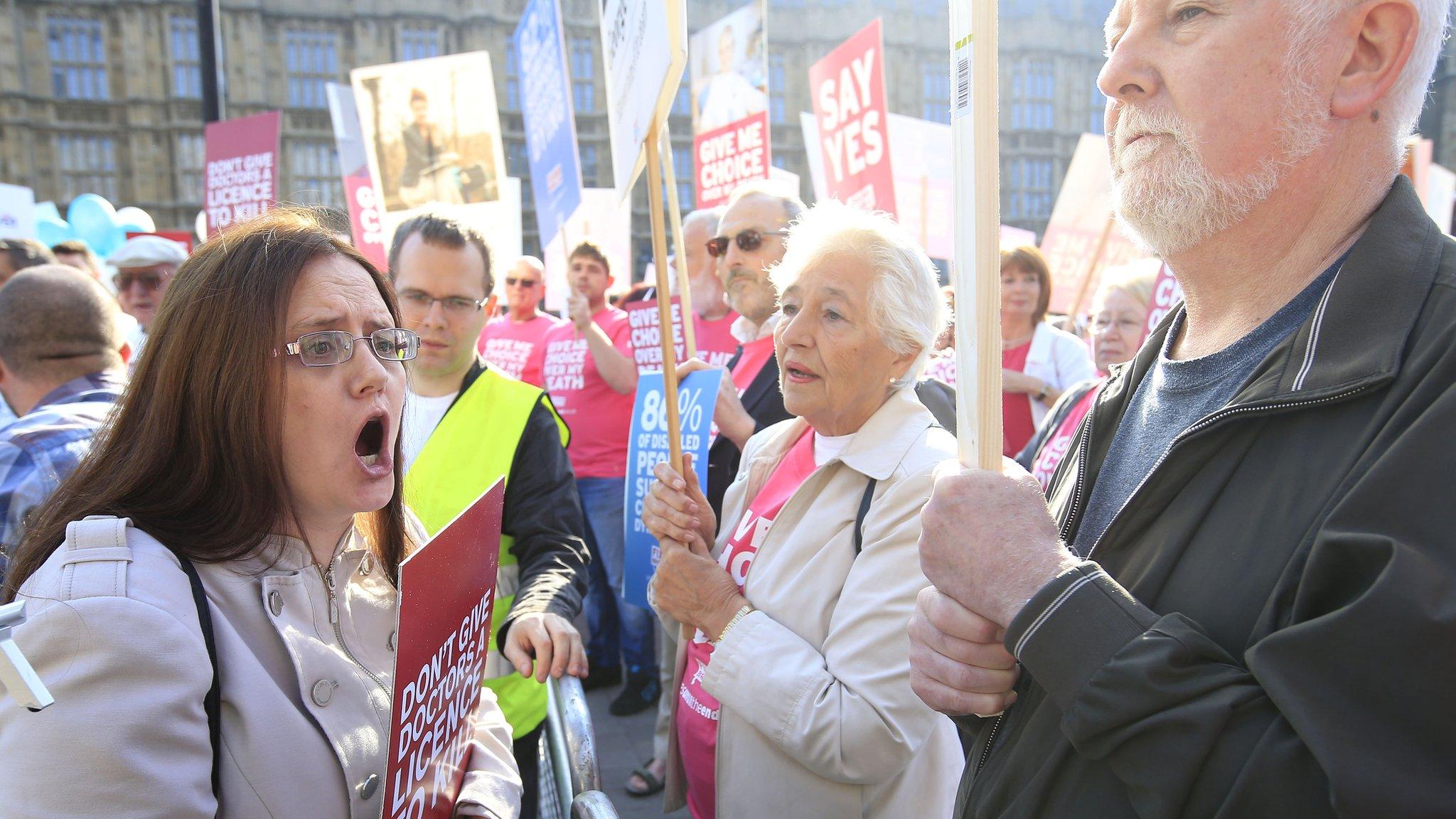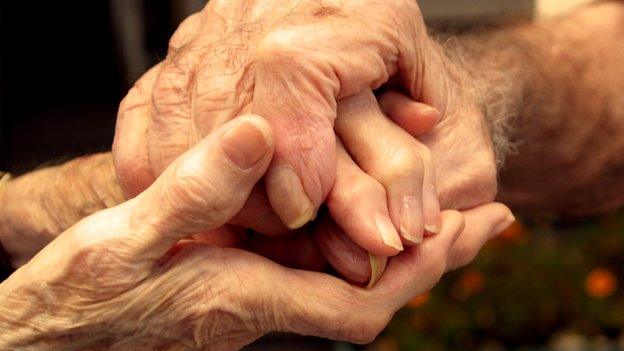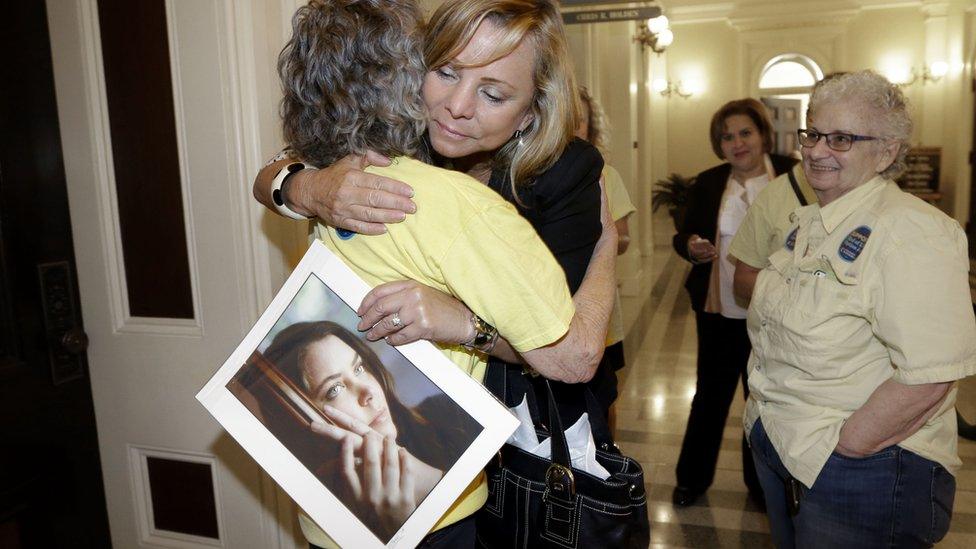Assisted dying: What does the law in different countries say?
- Published
California has become the fifth US state to allow terminally ill patients to legally end their lives with a doctor's supervision. What does the law say in different states and countries when it comes to the right to die?

What is the difference between euthanasia, assisted suicide and assisted dying?

These terms are not always used consistently.
Euthanasia is an intervention undertaken with the intention of ending a life to relieve suffering, for example a lethal injection administered by a doctor
Assisted suicide is any act that intentionally helps another person kill themselves, for example by providing them with the means to do so, most commonly by prescribing a lethal medication
Assisted dying is usually used in the US and the UK to mean assisted suicide for the terminally ill only, as for example in the Assisted Dying Bills recently debated in the UK

Where are these practices permitted?
The Netherlands, Belgium and Luxembourg permit euthanasia and assisted suicide
Switzerland permits assisted suicide if the person assisting acts unselfishly
Colombia permits euthanasia
California has just joined the US states of Oregon, Washington, Vermont and Montana in permitting assisted dying
Canada will permit euthanasia and assisted suicide from February 2016 (slightly earlier in the province of Quebec)

How did the law change in these places?

In the Netherlands, euthanasia and assisted suicide were effectively legalised through the use of the defence of necessity in prosecutions of (primarily) doctors for providing euthanasia
In Colombia, Montana and Canada, the courts also took the lead in changing the law, on the basis of human rights claims
In Belgium, Luxembourg, Quebec and Vermont, it was the legislature that changed the law
In Oregon and Washington, legislation was enacted because a majority voted in favour of an initiative placed before the electorate following a petition signed by a minimum number of voters

Must the person be suffering?

In the Netherlands, the patient's suffering must be unbearable, with no prospect of improvement. The suffering need not be related to a terminal illness and is not limited to physical suffering such as pain. It can include, for example, the prospect of loss of personal dignity or increasing personal deterioration, or the fear of suffocation.
The Belgian law is similar. The patient's suffering must be constant and unbearable, resulting from a serious and incurable disorder. There is no requirement that the patient be diagnosed with a terminal illness, although additional checks are imposed if the patient is not terminally ill.
In Canada, patients will qualify for assistance if they have a grievous and irremediable medical condition that causes enduring and intolerable suffering.
The five US states permit assisted dying only, so the patient must be terminally ill. There is no additional requirement relating to the patient's experience of the disease or any minimum level of suffering.

Which requests by patients will qualify?
All of the regimes require the patient to be competent, well-informed, and to make a voluntary request. Oregon requires that the voluntariness of the request be confirmed by two witnesses.

How old must the patient be?
Only the Netherlands and Belgium permit euthanasia for patients under the age of 18.
In the Netherlands, a competent patient between the ages of 16 and 18 may request euthanasia or assisted suicide. The parent or guardian does not have a veto, but must be consulted. Competent patients aged between 12 and 16 may also qualify, but only if their parent or guardian consents
In Belgium, a competent patient under the age of 18 may request euthanasia with parental consent. Additional scrutiny of the child's competence is required, and suffering based on a psychiatric disorder is excluded

What additional safeguards are imposed?

In the Netherlands and Belgium, a second doctor must see the patient to confirm their request is valid and their suffering unbearable. A network of doctors has been trained to undertake these consultations.
In the five US states, a second doctor must see the patient to confirm they are terminally ill and their request is valid. In Oregon, Washington and Vermont, the patient must also see a mental health professional if either the attending or consulting doctor suspects they may be suffering from a psychological disorder, such as depression, causing impaired judgment.

How are these cases reviewed?
None of the regimes require the prior consent of a judge, as proposed in the recent Assisted Dying Bills in the UK.
In the Netherlands, the doctor must report the case to the coroner, who passes it to a regional committee. If the committee finds the doctor did not follow the legal requirements, the case is referred to the prosecution service, and to the body that regulates doctors.
In Belgium, the process is similar, but there is only one committee.
In Oregon, the doctor must report each prescription and each death to the state health department. If the doctor fails to comply with the legal requirements, the health department refers the case to the body that regulates doctors.

What is known about the frequency of euthanasia and assisted suicide?

Doctors have been asked about the decisions they have made at the end of patients' lives, using an anonymous survey originally designed by Dutch researchers. These surveys have been carried out in a range of countries, including those where euthanasia and/or assisted suicide are permitted, and those where it is not.
The rate of euthanasia in the Netherlands has remained fairly stable at 2.8% of all deaths (in 2010).
The most recent survey of doctors in the UK was in 2007-08. The rate of euthanasia was reported to be 0.21% of all deaths, and a similar rate has been reported in France (in 2009), even though euthanasia remains illegal in both countries.
In contrast, research carried out in Flanders, Belgium found the rate prior to legalisation was unclear, with separate surveys reporting rates of 0.3% of all deaths in the region (in 2001-02) and 1.1% (in 1998). The rate has risen steadily since legalisation in 2002 to 4.6% of all deaths in the most recent survey in 2013.
Very low rates of assisted suicide are reported in countries that both permit and prohibit this practice.

Penney Lewis is a professor of law and co-director of the Centre of Medical Law and Ethics at the Dickson Poon School of Law, King's College London.
- Published5 October 2015

- Published11 September 2015

- Published10 September 2015

- Published9 September 2015
